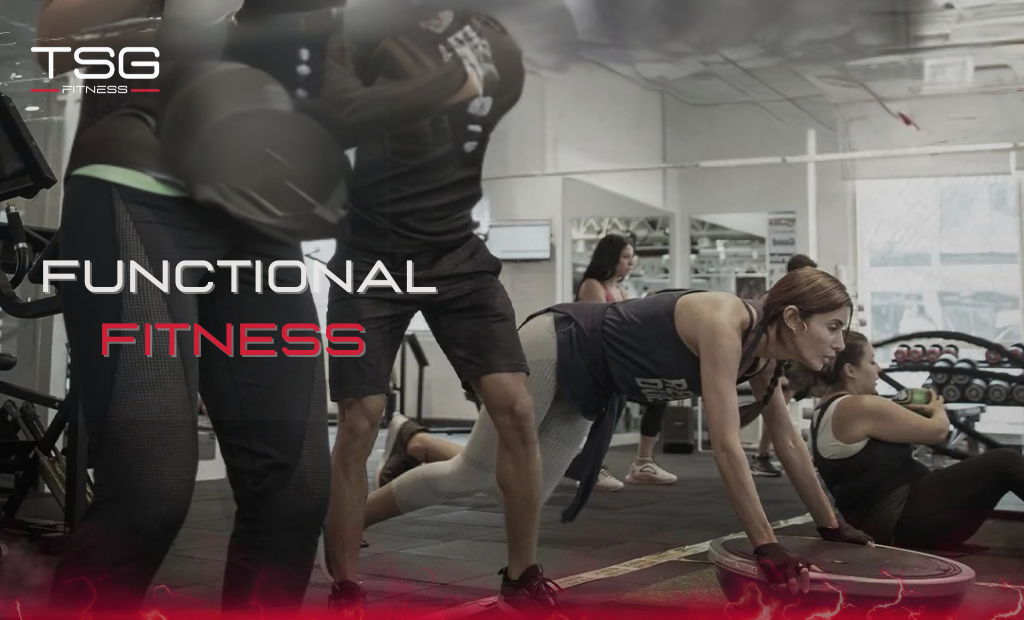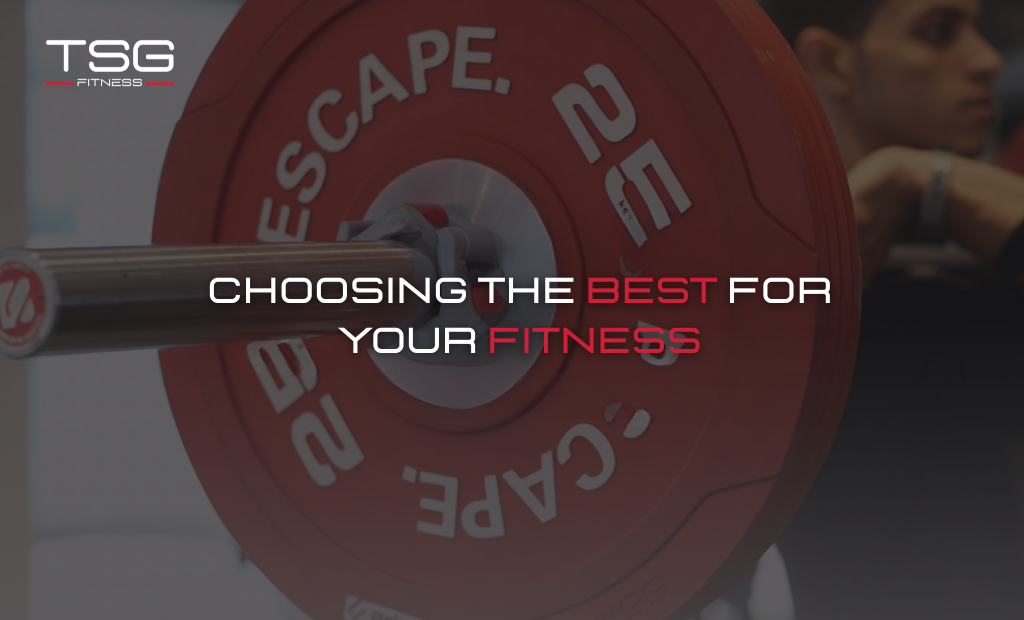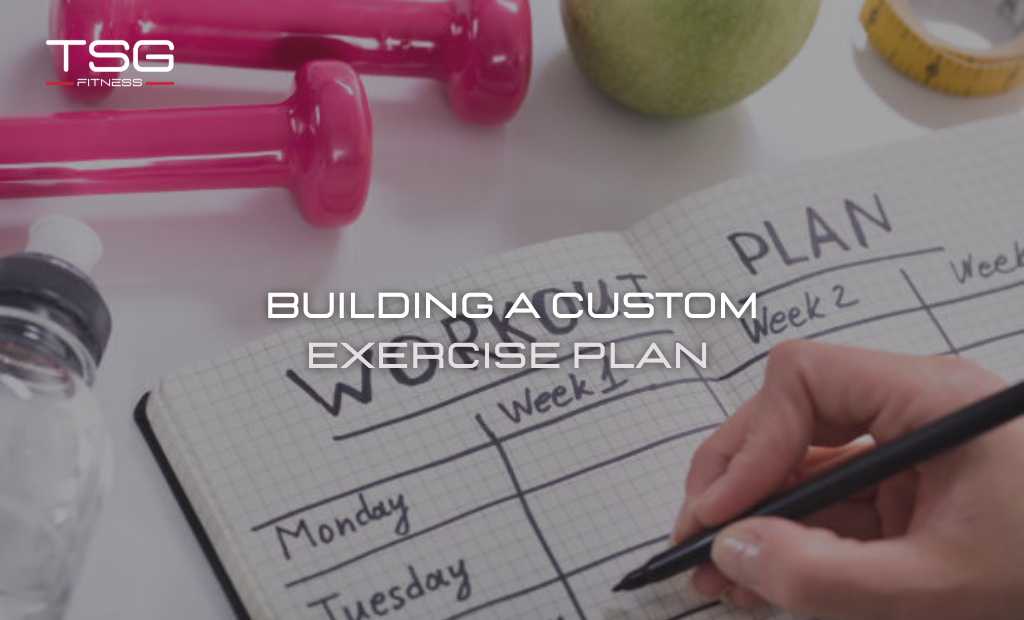
Functional Fitness Training | Move Better with TSG Fitness
Imagine a fitness program that not only makes you stronger but also helps you move, lift, bend, twist, and carry things more easily in daily life. That’s exactly what functional fitness training delivers. At TSG Fitness, we believe functional fitness isn’t just a trend — it’s a transformational approach that equips your body for real-world challenges, not just gym performances.
Whether you’re an athlete, a busy parent, or someone just starting their fitness journey, functional fitness helps you build a body that works better — more strength, more stability, more mobility, and fewer injuries. This guide dives into what functional fitness really means, why it matters, and how you can start reaping its benefits today.
What Is Functional Fitness Training?
Functional fitness training focuses on exercises that replicate movements you use in everyday life — pushing, pulling, squatting, lunging, rotating, carrying, and lifting. Unlike traditional gym routines that isolate specific muscles (think bicep curls or leg extensions), functional fitness trains muscle groups to work together in coordinated patterns.
Common exercises include:
- Squats and lunges (mimicking sitting, standing, climbing stairs)
- Deadlifts (lifting groceries, kids, or heavy bags)
- Push-ups and rows (pushing doors, pulling objects)
- Rotational moves (twisting to reach or carry)
- Core stabilization drills (maintaining balance and posture)
At TSG Fitness, our functional fitness programs combine bodyweight movements, free weights, kettlebells, resistance bands, and balance tools to create smart, practical workouts.
Why Is Functional Fitness So Important?
Improves Daily Performance
Functional fitness translates directly into better performance in everyday tasks — from carrying shopping bags to playing with your kids or moving furniture.
Enhances Mobility and Balance
Many injuries happen because of poor mobility or balance. Functional fitness strengthens stabilizing muscles and improves joint health, reducing your risk.
Builds Functional Strength
Instead of focusing on “mirror muscles,” functional training develops strength that’s practical, efficient, and usable across multiple activities.
Supports Longevity
Want to stay active and independent as you age? Functional fitness maintains your body’s ability to perform basic movements safely and effectively.
Key Components of a Functional Fitness Program
Multiplanar Movements
Functional training moves you through all planes — forward, backward, sideways, twisting — preparing you for the unpredictable nature of real life.
Core Activation
Every functional exercise engages your core, building a strong, stable foundation for all other movements.
Balance and Stability
By incorporating exercises that challenge balance, you train the body to stabilize itself, reducing falls and improving posture.
Integrated Strength
Functional workouts strengthen multiple muscle groups simultaneously, teaching them to work as a unit.
Best Functional Fitness Exercises to Try Today
Squats
The king of functional movements, squats train hips, knees, and ankles to work together, essential for sitting, standing, lifting, and climbing.
Deadlifts
Mastering the hip hinge builds posterior chain strength (glutes, hamstrings, back), key for lifting anything safely.
Push-Ups
A bodyweight staple, push-ups develop upper-body pushing strength, core stability, and shoulder health.
Farmer’s Carry
Walking with heavy weights in each hand builds grip strength, core endurance, and whole-body stability.
Rotational Core Drills
Moves like Russian twists or woodchoppers improve twisting strength and spine mobility.
How TSG Fitness Designs Functional Training Programs
At TSG Fitness, we don’t believe in one-size-fits-all. Here’s how we craft customized functional fitness plans:
- Assessment: We evaluate your current fitness, movement patterns, and goals.
- Personalization: Whether you’re recovering from injury, training for a sport, or improving general fitness, we tailor the plan to fit your needs.
- Progression: We start with foundational movements, gradually increasing complexity and load as your skills improve.
- Support: Our expert coaches guide you every step of the way, ensuring proper form and steady progress.
Want to explore TSG’s personal training programs or group fitness classes? We’ve got you covered.
FAQs About Functional Fitness
- Who can benefit from functional fitness training?
Everyone! From athletes to seniors, functional fitness is adaptable and scalable to any fitness level. - How often should I do functional fitness workouts?
Aim for 2–4 sessions per week, depending on your goals and recovery needs. - Can functional fitness help with weight loss?
Yes! Functional workouts burn calories, build muscle, and boost metabolism, supporting fat loss goals. - Do I need special equipment for functional fitness?
Not necessarily. While tools like kettlebells and resistance bands help, you can start with just bodyweight exercises. - Is functional fitness safe for people with injuries?
With proper modifications and guidance (like from TSG’s expert trainers), functional fitness can aid recovery and prevent re-injury.
Final Takeaway
Functional fitness training is more than a gym trend — it’s the blueprint for a stronger, more capable body that moves better, feels better, and performs better in everyday life. At TSG Fitness, we specialize in designing functional fitness programs that meet you where you are and take you where you want to go.
Ready to move smarter? Chat with TSG Fitness on WhatsApp now and discover how functional fitness can transform your training



